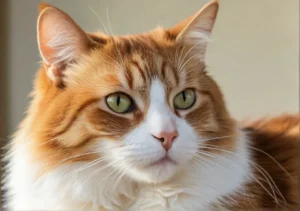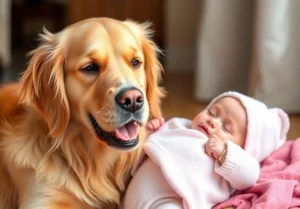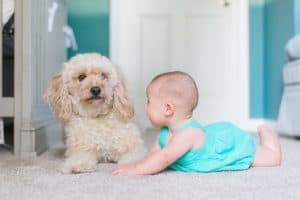Cats are known to create a symphony of meows, purrs, and even cries that can sound eerily similar to a human baby’s wail. But why do cats cry like human babies? Let’s explore the intriguing reasons behind this feline behavior.
Cats are mysterious creatures with a range of vocalizations, but their cries that resemble human babies can leave us puzzled. So, why do cats exhibit this behavior that tugs at our heartstrings? Let’s uncover the reasons behind this fascinating phenomenon.
1. Vocal Communication
Cats are known to be masters of communication, utilizing a wide range of sounds to convey their needs, desires, and emotions. When it comes to why cats cry like human babies, it all boils down to vocal communication. Just like a baby’s cry can mean hunger, tiredness, or discomfort, a cat’s cry can also signify various messages they want to convey to their owners.
One common reason why cats cry like human babies is to communicate their needs. Meowing, for example, can be a way for cats to express hunger, thirst, or even loneliness. By mimicking the sounds of human babies, cats are effectively tapping into our instincts to care for and nurture the young. This vocal similarity helps create a bond between feline and human, making it easier for us to understand and respond to their needs.
Additionally, cats may also cry like human babies to communicate their emotions. Just as a baby’s cry can signal distress or discomfort, a cat’s cry may indicate fear, anxiety, or stress. Paying attention to the tone and pitch of your cat’s cries can help you better understand their emotional state and provide the necessary comfort and support.
Understanding the vocal communication of cats is key to building a strong bond with your feline friend. By listening carefully to their cries and responding appropriately, you can ensure that your cat feels understood and cared for, strengthening your relationship and creating a harmonious living environment.
2. Seeking Attention
Have you ever noticed how your cat seems to cry like a human baby when they want your attention? This behavior isn’t just a coincidence; it’s actually a clever tactic that cats use to get what they want from their owners. Just like a baby’s cry is designed to elicit a response from caregivers, a cat’s cry is a powerful tool for seeking attention.
One reason why cats cry like human babies when they want attention is that they’ve learned that this behavior gets results. When a cat meows or cries, their owner often responds by giving them the attention they’re seeking, whether it’s petting, playtime, or a tasty treat. Over time, cats learn that crying is an effective way to communicate their desires and get what they want.
In addition to seeking attention, cats may also cry like human babies as a way to express their affection. Just as a baby coos and babbles to show love and attachment, a cat’s cries can be a way of expressing their bond with their owner. By responding to your cat’s cries with love and affection, you can strengthen the emotional connection between you and your feline companion.
Ultimately, when your cat cries like a human baby, they are communicating their needs, desires, and emotions in a way that has been shaped by their evolutionary history and their unique bond with humans. By understanding and responding to their cries, you can build a deeper relationship with your furry friend and ensure that their needs are met in a loving and caring way.
3. Emotional Expression
Cats cry like human babies as a way to express their emotions. When your furry friend lets out a plaintive meow, it could be a signal of distress, loneliness, or even excitement. Just like human infants use cries to communicate their needs and feelings, cats resort to meowing to convey their emotions to their owners. So, the next time your cat lets out a baby-like cry, take a moment to understand what they might be feeling.
4. Conditioning and Reinforcement
Cats may learn to cry like human babies through conditioning and reinforcement. If a cat meows and gets attention, food, or affection in return, they quickly learn that meowing yields positive outcomes. Over time, this reinforcement loop can lead to cats mimicking the sounds that trigger favorable responses from their human companions. This behavior pattern might have its roots in survival instincts, as kittens naturally meow to grab their mothers’ attention. So, by responding to your cat’s cries with love and care, you might unknowingly be reinforcing this behavior. Remember, positive reinforcement plays a significant role in shaping your cat’s communication style.
Extra Tip: To discourage excessive crying in cats, try to identify and address the root cause of their meowing, whether it’s a need for attention, food, or playtime. By understanding the underlying reasons for their cries, you can effectively manage their behavior and strengthen your bond with your feline friend.
5. Medical Concerns
If your cat is crying like a human baby, it might be a sign of an underlying medical issue. Bold Some common reasons for this behavior include pain, discomfort, or even potential vision or hearing problems. Instead of playing the guessing game, it’s crucial to bold seek veterinary care promptly to rule out any health concerns. Your furry friend deserves the best, so don’t delay in getting them the help they need.
6. Comfort-Seeking Behavior
When cats cry like human babies, it could be their way of seeking comfort and reassurance. Cats, just like us, have emotional needs and can feel anxious or insecure. To help your feline friend feel safe, create a cozy environment with their favorite toys, blankets, or sleeping spots. Bold Spending quality bonding time, gentle petting, or quiet moments together can also provide the reassurance they seek. Remember, a little love goes a long way in comforting your cat.
One unique insight to consider is that playing soft, calming music or leaving a piece of your clothing with your scent near your cat can also help provide them with a sense of security and comfort.
7. Environmental Influences
Cats are highly sensitive animals, and their vocalizations can be influenced by their surroundings. When cats cry like human babies, it could be due to environmental factors such as feeling stressed, scared, or wanting attention. For example, if a cat is in a new or unfamiliar environment, they might vocalize like a baby to express their discomfort or anxiety. Similarly, if a cat is feeling lonely or bored, they may cry like a baby to seek companionship or stimulation. Understanding the impact of environmental influences on a cat’s vocalizations can help us interpret their behavior and respond appropriately to their needs.
8. Evolutionary Adaptations
The behavior of cats crying like human babies may have evolutionary roots that date back to their wild ancestors. In the wild, young animals use vocalizations to communicate with their mothers and signal their needs for food, warmth, and protection. Similarly, domestic cats may have retained this behavior as a way to communicate with their human caregivers. By crying like human babies, cats may be trying to elicit a nurturing response from us, similar to how a baby would seek comfort and care from its parents. This evolutionary adaptation underscores the strong bond between cats and humans, highlighting the unique ways in which cats have adapted to communicate with us effectively.
Additional Unique Insight: Cats may also cry like human babies as a form of manipulation or emotional manipulation to get what they want from their owners. This behavior can be a learned response based on past experiences where crying led to a desired outcome, such as getting attention, treats, or being let outside. By understanding the potential manipulative aspect of a cat’s cries, owners can set boundaries and reinforce positive behaviors to ensure a harmonious relationship with their feline companions.
Alex, a passionate animal lover, has experience in training and understanding animal behavior. As a proud pet parent to two dogs and three cats, he founded AnimalReport.net to share insights from animal experts and expand his knowledge of the animal kingdom.




